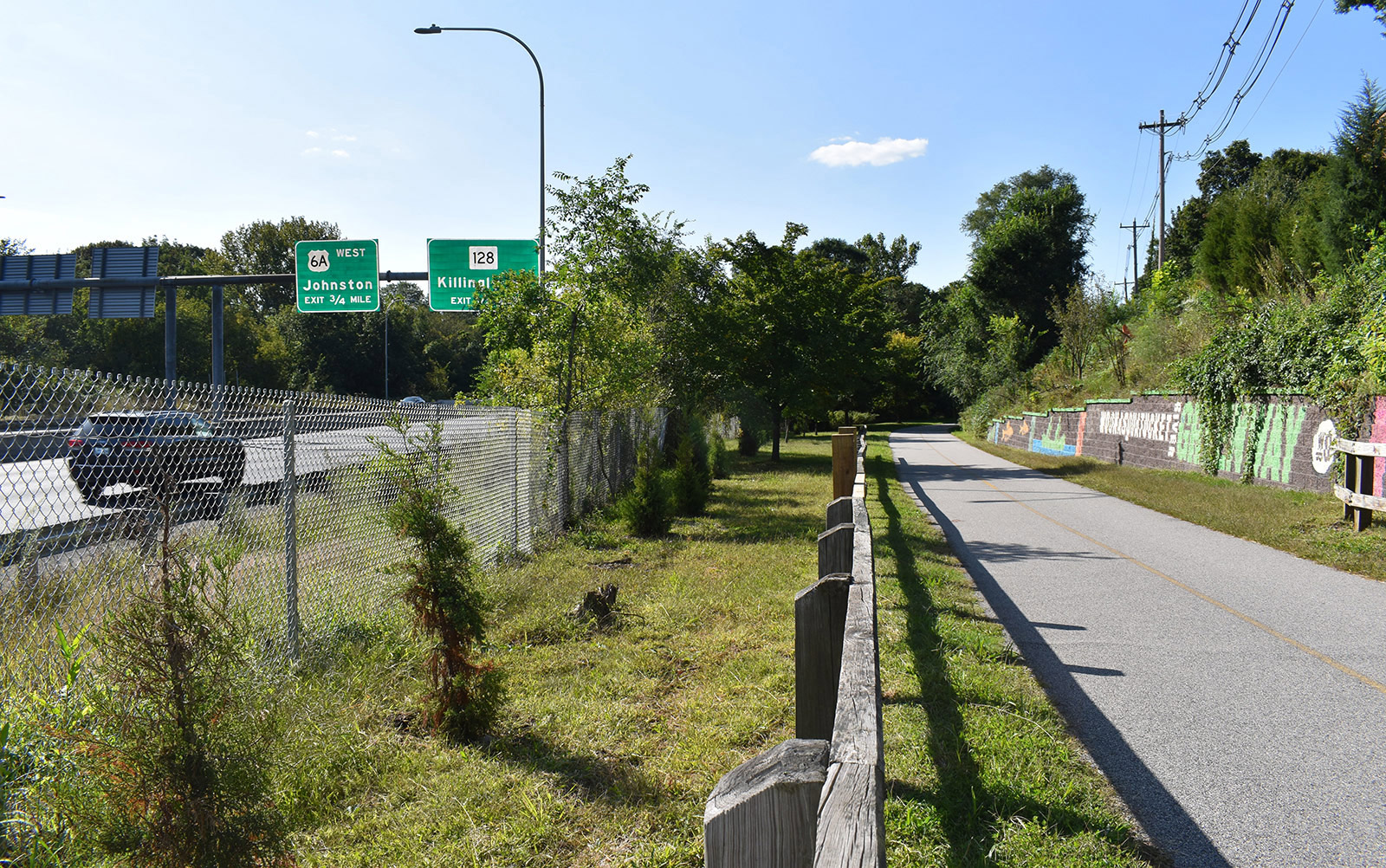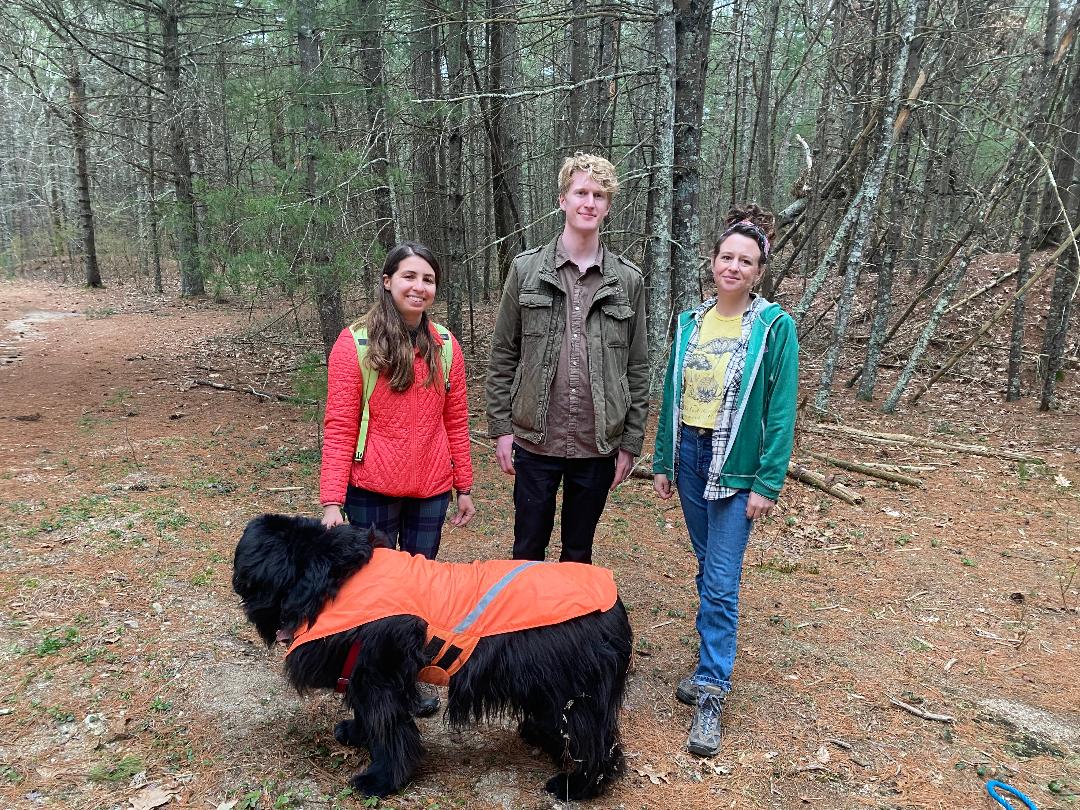‘Mini-Forest’ Plants Seeds of Change for Neighborhood Youth
Environmental justice area receives needed infusion of green
September 28, 2023
PROVIDENCE — Manton Heights is smack dab in an environmental justice area. The development with 330 units serving low-wealth families in two of the city’s oldest neighborhoods, Olneyville and Manton, is surrounded by asphalt and traffic.
All of the residents in these environmentally impaired watershed neighborhoods live on the front lines of climate impacts, such as more frequent flooding and excessive heat. Their climate vulnerability is compounded by a disproportionate exposure to toxins, such as lead, pollution, and the dirty legacy of the city’s industrial past.
15 Minute Field Trips, in collaboration with the Providence Housing Authority (PHA) and the Woonasquatucket River Watershed Council (WRWC), is at the end of a project designed to empower the youth of Manton Heights to learn about the environment, including their involvement with a “mini-forest” installed along the Woonasquatucket River Greenway near their homes.
The planting area was chosen because it is the closest and most accessible spot to Manton Heights. The property is owned by the city and managed by WRWC. Until Sept. 23, the remade area, a long and narrow stretch of open space, had a spattering of saplings and plenty of highway noise. The recent Saturday morning community gathering rectified the barren situation, as native trees, shrubs, and flowers were planted. This mini-forest is also expected to help cool the neighborhood in the summer and lessen the drone of Route 6 traffic.
ecoRI News visited the mini-forest site a few days before the rescheduled planting.
Melissa Guillet, founder of 15 Minute Field Trips, has taken decibel levels as high as 98.4 — a louder noise than that produced by a gas-powered leaf blower — at the largely naked site along the highway. A jet taking off produces 120 decibels. A 10-minute walk further down the Woonasquatucket River Greenway cuts the decibel level in half, thanks to a stand of mature red cedars.
The 6,700-square-foot area, between the Dennis J. Roberts Expressway and an Olneyville neighborhood with low tree canopy, is now home to 20 red cedars, 13 arrowwood, 10 blueberry bushes, five red maples, three slippery elms, three black cherry, three sweet birch, three sassafras, two red oak, a quaking aspen, and 14 blue lupines Guillet grew in her Johnston yard. She noted Lupinus perennis is the only plant the larvae (caterpillars) of endangered Karner blue butterflies can eat.
The goal of the project is “to increase the biodiversity of tree species in the area in an effort to support birds and pollinators and provide a cooler, quieter green area for residents to enjoy,” according to Guillet. The work is also about extending a wildlife corridor into a concrete-heavy neighborhood.

“E.O. Wilson suggested setting aside 50% of the planet to preserve biodiversity. Fifty by ’50 is the goal of protecting 50% of the earth by 2050 to avoid a mass extinction of species,” Guillet wrote in the grant application. “While this sounds ambitious, it is possible by connecting corridors of wild areas. Our proposed area expands upon the Woonasquatucket River Greenway.”
Guillet also noted the plantings will also serve as a model for other neighborhoods to add understory and reduce noise.
“There have been great efforts put into planting solitary trees in the sidewalks of marginalized communities, which does help,” she wrote. “This more layered approach will create vertical space for wildlife while retaining water better than a single tree alone, making it more resistant to climate change and extreme weather.”
Guillet said it’s important to get children environmentally curious about nature so they learn to become future advocates for its protection.
The planting project aligns with another partnership-driven grant, awarded by the Narragansett Bay Estuary Program (NBEP), that addresses stormwater runoff on Salmon Street. The WRWC and project partners, including PHA and ONE Neighborhood Builders, are working with local residents to assess alternatives for nature-based green stormwater treatment/infrastructure that will help protect nearby waterways and provide climate resilience to this environmental justice area of concern.
Environmental justice neighborhoods are home to Rhode Island’s most underserved populations and those most impacted by the climate crisis.
Salmon Street is among several streets in the more degraded sections of the Woonasquatucket River watershed that unleash a torrent of stormwater runoff, because of the area’s high amount of impervious surfaces, toward the Woonasquatucket River Greenway and into the long-abused river.
The Environmental Protection Agency’s EJScreen Tool identifies Olneyville as an environmental justice neighborhood. Within Olneyville, Salmon Street is within a “High Priority Environmental Justice Area” identified as Level 4 using NBEP’s Environmental Justice Planning & Mapping Tool. Olneyville is also a designated Green Justice Zone in the Providence Climate Justice Plan.
15 Minute Field Trips helps Rhode Island youth, primarily in Providence, advocate for the environment through art and community action. The nonprofit has run programs at the South Providence and Washington Park public libraries, and installed a pollinator garden at Columbia Park on Michigan Avenue.
The current youth project began in March and has included workshops, tree education, family activities, art projects, litter cleanups, and a bird walk. It is expected to end in October with the Tomaquag Museum leading an intergenerational walk to share “traditional ecological knowledge with the community.”
The project was funded by a $20,000 grant from the Arbor Day Foundation.




Thank you 15 Minutes for planting!!
We need more highway buffers …. and green spaces….everywhere…
15 minute field trips and the Woonies are both GREAT organizations
Thank you!
Thank you Greg!